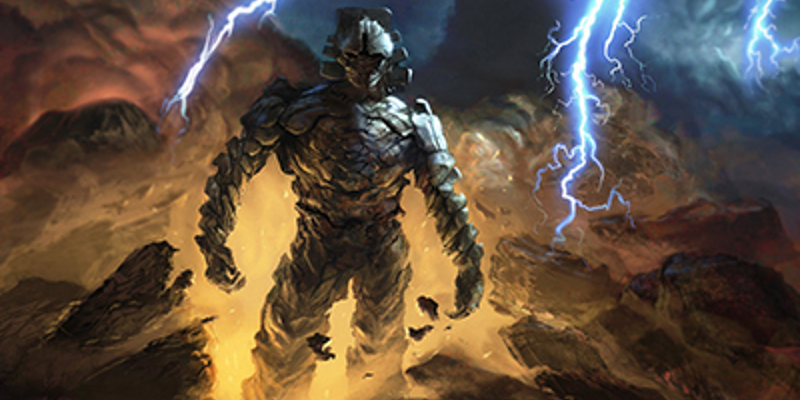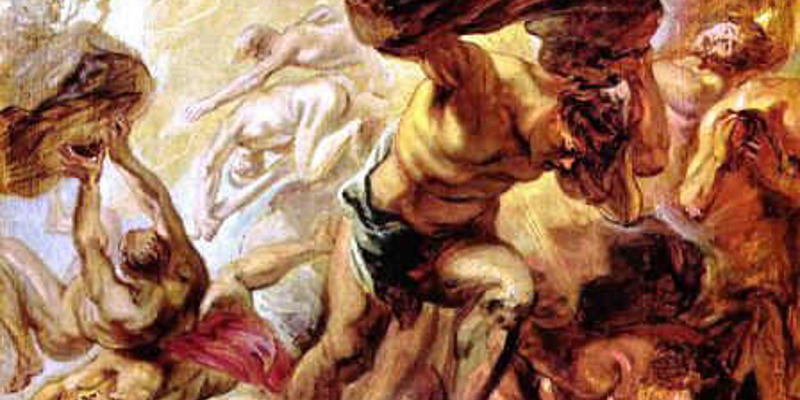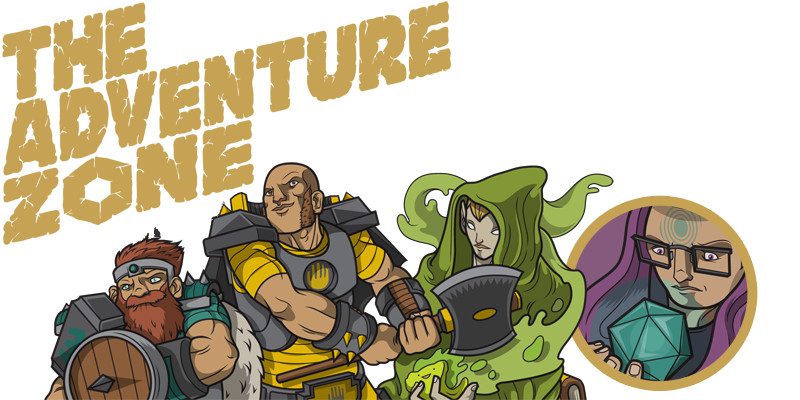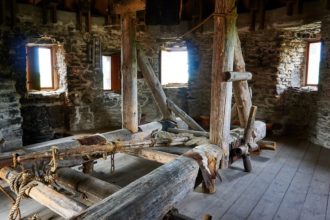Get to Know the Giants

Much like a robotic assassin from the future, I’m back…and I’ve brought giants with me. No, I’m not training them to the zone entrance where an AFK ogre is blocking the entrance. In a previous article about the kenku, some comments suggested creatures I should cover in the future. One of those suggestions was giants, as topical a choice as any, due to the recent release of Storm King’s Thunder. Full disclosure, I have not read through the supplement, so it’s possible there is some other stuff going on in there to which I am not privy. I do, however, have a lot of historical information and the basic 5e information, so onward we trudge. To trudge: the slow, weary, depressing yet determined walk of a man who has nothing left in life except the impulse to simply soldier on.
Unlike a lot of other creatures, giants appear right from the start of things, back in the 1974 release of Dungeons & Dragons. The base game gave us five of these mamajamas: hill giants, stone giants, frost giants, fire giants, and cloud giants. A year later, the Greyhawk setting gave us the storm giant. In 1976, Gods, Demi-gods & Heroes told us about mist giants, Antero Vipunen, Hymer, Hyrm, Mimir, Mokkerkalfe, Sterkodder, Surtur, and Vaftthrunder. As you might expect, a lot of this comes directly from Danish, Finnish, and Norse mythology. Antero Vipunen is from Finnish folklore, where he is a giant who sleeps beneath the earth, and possesses spells and knowledge that even the deities do not possess. Hyrm is a transposition of Hrym, a giant mentioned in the Poetic Edda and Prose Edda as the captain of the Naglfar, the ship comprised of the fingernails and toenails of the dead that will ferry the hordes of warriors to battle the gods during Ragnarok. Mimir is a Norse god of wisdom, who was beheaded, but had his head magically preserved by Odin, so that he could continue to give wise counsel. Vaftthrunder is a giant known for his wit and intellect that once competed against Odin. I’m not going to continue. Y’all get the picture.

Moving ahead to Advanced Dungeons & Dragons, giants appear in the 1977 Monster Manual. We see an expansion of giants with both 1981’s Fiend Folio, giving us fog giants and mountain giants. There is further expansion with 1983’s Monster Manual II, which introduces some now classic variations: firbolg, fomorians, and verbeeg. I’m a big firbolg bolster. During this same time, we get stone giants as a playable race in an issue of White Dwarf, and the introduction of wood giants in an issue of Dragon.
This is a weird time for D&D, as we have Advanced Dungeons & Dragons and Dungeons & Dragons running concurrently. The core six giants are reprinted here, in both the basic and expert versions of Dungeons & Dragons. However, it’s not until 1985’s Dungeons & Dragons Master Rules that we see mountain giants crop up. When they do, they do so alongside not fog giants, but sea giants. Sea giants continue to get some love with 1990’s The Sea People, where they are presented as a playable option. Dungeons & Dragons doesn’t move much beyond those during the rest of the run, but reprints the eight giants presented here for myriad publications over the next decade.
With the advent of Advanced Dungeons & Dragons 2nd edition, we really start to see a giant explosion (heh). The Monstrous Compendium Volume One in 1989 gives us the six giants we know and love, yet again. (I pause here to note that these six dudes* have been reprinted and updated more by this point than we have seen total versions of the kenku or azer). The Monstrous Compendium Volume Two, also released in 1989 (the greedy bastards!), sees the official introduction (unless it appears somewhere else first, but I don’t think it does) of the term giant-kin, applied to creatures such as the cyclops, firbolg, fomorian, and verbeeg. A scant year later, in the Monstrous Compendium Greyhawk Appendix, giant-kin is further expanded to include voadkyn (the giant formerly known as wood giant) and spriggan (probably my favorite giant, and a super rad movie that is basically Sci-Fi Indiana Jones). You might think we are done, but nay. The decade of Advanced Dungeons & Dragons was long, ten whole years.

We further see the spacesea giant pop up in the Spelljammer compendium. Desert, jungle, and reef giants show themselves with the Al-Qadim compendium. The Complete Book of Humanoids provides rules for firbolg and voadkyn as playable races. All of these giants are reprinted in 1993’s Monster Manual, along with a new giant-kin, the ettin. Dark Sun is up to its sorcerer kings in giants. We get Athasian giants of the beast-headed and humanoid-headed varieties, the latter of which is divided into the desert and plains variety. That’s probably not enough giants, so we’re lucky we also get the crag giant and shadow giant. Mystara provides us with the athach and hephaeston. Forgotten Realms released an entire standalone book about their giants, aptly named Giantcraft. Finally, the Dragonlance setting felt the need to tell us about cave lords, desolation giants, and earth giants.
Third edition starts the whole shebang over again, and thus we are back to the six “true giants” with the initial publications. This time around, we see the advent of the creature type giant. Like a lot of things in third edition, we see a truly staggering amount of information and books released to expand giants even further. In addition to the ones listed above, the phaerlin, forest, ocean, sun, Jotunheim frost, Muspelheim fire, bog, death, eldritch, sand, and craa’gorhan giants all make appearances. Fire and frost giants get the playable race treatment during this time. This is the first time we also see specific entries for variants within the same race of giants. For example, frost giant entries for jarl, mauler, spiritspeaker, and tundra scout all appear. You can count these as additional giants if you wanted to, but I’m rolling them under their main header for the sake of brevity. Finally, we see the introduction of the Goliath player race, in the Races of Stone supplement, released in 2004. Goliaths are related to giants, though much closer to other standard playable races in terms of size and statistics.
Fourth edition rejiggers the classification and headers, and adds titan versions of each giant type, as the rulers of giant-kind. Giant is no longer a creature type in this edition. Instead, giant is a keyword, falling under the humanoid creature type. This also allows for the interjection of further keywords, for the sake of triggering all of the different abilities and features of fourth edition. Most giants are of the natural origin, another keyword in this edition, but some are elemental or shadow. Goliaths are a little more elemental-focused in this edition, sharing some kinship with earth and stone, as is evident in their racial power.

This brings us to the current edition of Dungeons & Dragons, fifth edition! Do you want to guess what giants are presented here? Well, if you guess the six “true giants” we have seen over and over, you’d be right! The fifth edition Monster Manual makes the decision to keep these giants together under a single header, breaking them out with sub-entries, and providing a cohesive lore presentation for them. However, there are plenty of other giants within the book, such as ettin and fomorian. Titan is broken out as a subtype for other creature types. For example, the empyrean is a celestial (titan). My favorite thing about fifth edition giants is the aforementioned cohesive lore. As a reminder, Forgotten Realms is the default setting for fifth edition, so the lore is sometimes setting specific, as is the case here. That said, the lore works fairly well for other settings.
The giants are bound together by the Ordning: a social ranking of each giant based on various skills and strength, providing a way for giants to know which giants are its superiors or inferiors. The Ordning is further subdivided by race: storm giants are the highest, followed by cloud, fire, frost, stone, hill, and then all giant-kin bringing up the tail end. Even the lowest frost giant is superior to the mightiest stone giant. There is also an interesting culture of giant motives implied by the Ordning. Rather than it being considered a heinous crime to betray another giant, it’s just a social faux pas, but only if the betrayer is caught. Otherwise, it’s just good sense to find a way to best your competition so you can move up in rank.
Rather than focus on the presentation of each race of giants, I want to end with a discussion of the giant pantheon. It’s largely a riff on both the Greek and Norse pantheons, but there is some interesting stuff at play beneath the surface. Annam is the prime deity of the pantheon, and is the creator god of the giants. He’s the god of magic, knowledge, fertility, and philosophy, responsible for fathering most of the other giant deities. From pairings with an unknown sky goddess (or Othea, mother of giants, depending on the lore) he fathered Stronmaus, Grolantor, Iallanis, and Skoraeus Stonebones. Surtur (Surtr), Shax, Diancastra, Hiatea, Thrym (Hyrm/Hrym), and Karontor are also his children, but their mothers are unknown and possibly varied. Vaprak is a child from a hag or ogress in disguise seducing Annam. Then there is Memnor. Memnor is possibly Annam’s child from the sky goddess, possibly his brother, OR…the growth of a severed head or entrails ripped from a titanic, planet-eating horror slain by Annam and/or Stronmaus. Want to guess which one I would always vote for?
According to previous lore, Annam left the world because of an agreement with Othea, or because he was tired of the squabbling of his children and their worldly offspring, or to recover from wounds from a great battle. You can pick what fits here. Othea is Forgotten Realms canon, but On Hallowed Ground and Planescape provide the other options. In all cases, he is waiting to be called back to the world, either by the world itself, or by his children in a specific way, which isn’t explicitly mentioned. This is great for open-ended story insertion.

In his absence, his children vie for power in his stead, particularly Memnor, who is worshipped almost exclusively by evil cloud giants and evil giant wizards. Stronmaus opposes Memnor at every turn, having accepted rulership of the pantheon during his father’s departure. Stronmaus is the giant deity of the sun, sky, weather, and joy, to oppose Memnor’s portfolio of pride, honor, mental prowess, and control. Part of the issue with the giants is that Memnor’s confusing history is in-world, as is the question of whether he is a loyal to Annam, or is a conniving liar.
While there are plenty of deities to plumb for lore, I’ve always liked Vaprak. Vaprak is the offspring of the deceitful ogress or hag and Annam. He is a piteous figure: horribly deformed and disfigured, worshipped only by ogres and trolls, and with no guile and limited intellect. He could be a savage, terrible god, but he’s tempered by his approach to the rest of the pantheon. Instead of being angry and jealous of his half-brothers and sisters, he reveres them. He is awed by their power and demeanor, and while he is afraid his own worshippers will abandon him for them, he still respects them. He lives in a sad cave in Shatterstone, the 524th layer of the Abyss. He doesn’t even get a chance to hobnob with the rest of the giant deities, isolated and relegated to spending his time with demons, longing to be accepted. This is great stuff, and should be a hook for mid to high level adventure.
This brings us to Storm King’s Thunder. This adventure kicks off with Annam revoking the Ordning, and leaving giants to squabble for power. As you might expect, giants start running amok and all sorts of terrible hijinks occur. There is definitely more to it than that, but I’m leaving it vague because I haven’t had the time and opportunity to delve into it. If you are looking for things to add to Storm King’s Thunder, the history of the giants is a great place to look. They have a long, storied history in D&D. They are not the lesser-known azer and kenku, but there is so much lore that people probably don’t really know about them. I would definitely run a game based on conflict between Stronmaus and Space-Monster-Intestine-Child Memnor, for example. As always, my hope is that you learned something new, and can appreciate giants a little more.



